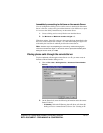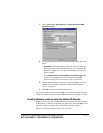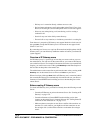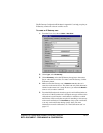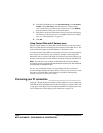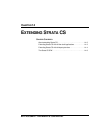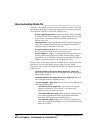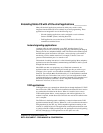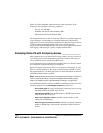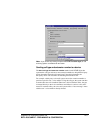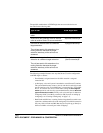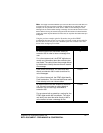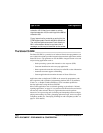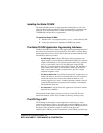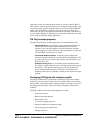
CHAPTER 14. EXTENDING STRATA CS 14-3
BETA DOCUMENT - PRELIMINARY & CONFIDENTIAL
Extending Strata CS with off-the-shelf applications __________
Many off-the-shelf applications produced by third-party vendors can be
integrated into the Strata CS Server without any custom programming. These
applications are integrated in one of the following ways:
n In-band signaling applications can be configured to work with most
Centrex and PBX systems, including Strata CS.
n TAPI applications can use the Strata CS TAPI Service Provider to
communicate with the Server.
In-band signaling applications
A human caller can send commands to any PBX, including Strata CS, by
generating a flash hook command by quickly pressing and releasing the hang-up
button (or hook) on a telephone handset cradle. The flash hook command signals
the PBX that special instructions will follow, such as placing a call on hold or
transferring a call to another extension. For example, a Strata CS user can
generate a flash and then press 1 to transfer a call.
This method of sending instructions is called in-band signaling. Many telephony
applications use this same method, communicating with PBX or Centrex systems
through flash hook commands.
Most PBXs use their own proprietary sets of flash hook commands. An
application that uses in-band signaling will usually provide you with a way to
configure it for a specific set of flash hook commands, such as those used by
Strata CS. For example,
&3 (a flash followed by a 3) is the flash hook command
that Strata CS uses to disconnect from a call, so you can configure the in-band
signaling application to use
&3 as its disconnect command. For a complete list of
the Strata CS telephone commands, see the “Telephone Commands Quick
Reference” in Strata CS Client User Guide.
TAPI applications
TAPI applications can communicate with the Server through the Strata CS TAPI
Service Provider (TSP). The TSP can be installed on the Strata CS Server and on
any workstation networked to the Server. When it is installed, users can use
TAPI-enabled phone dialers, contact managers, and similar applications. No
modem is required, and the Strata CS Client does not need to be installed on the
user’s computer.
The TSP runs in the background, establishing a connection between the TAPI
application and the Strata CS Server. Whenever a call is transferred to the station
being monitored by the TSP, any TAPI-compatible application running on the
same PC is notified of the call. The application can then perform functions such
as getting caller ID or DID, transferring the call, putting the call on hold, parking
the call, or hanging up. TAPI applications can also place new calls.



